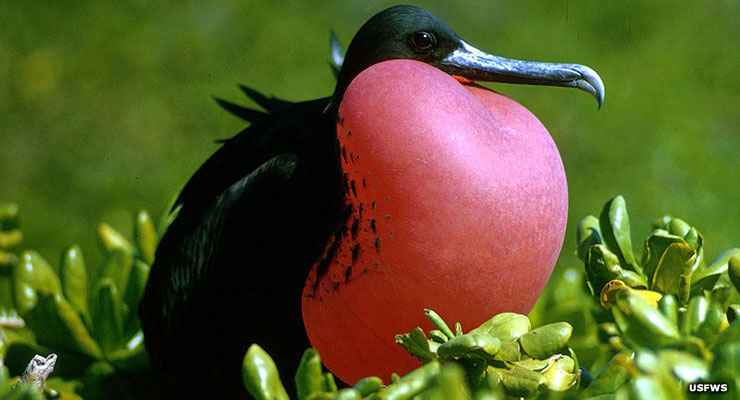Key West National Wildlife Refuge

Masked Frigatebird

Established by President Theodore Roosevelt in 1908, Key West National Wildlife Refuge contains 189,497 acres of "property," of which only 2,019 acres are above mean sea level. All of the land area is uninhabited and is designated wilderness, except for 154 acres maintained for the US Coast Guard. There's also an adjacent 206,289 acres of marine waters managed by the US Fish and Wildlife Service in conjunction with the state of Florida.
Key West NWR stretches from the Dry Tortugas east almost all the way to Key West. The refuge provides important nesting habitat and protected breeding grounds for endangered and threatened sea mammals, fish, plants, wildlife and for other native birds and wildlife.
The 26 islands contained within the Refuge are mostly covered with mangrove forests but a few sport sandy beaches and dunes that attract a fair few endangered sea turtles for egg-laying purposes. A couple of islands are large enough to support coastal berm hammocks and salt marshes. The areas surrounding the islands are rich in submerged seagrass beds and coral reef communities. At low tides, the mud flats attract thousands of hungry wading birds.
Key West National Wildlife Refuge is accessible only by boat and offers no visitor facilities. Portions of the beaches on two islands are closed to the public. Boca Grande Key and Woman Key have sections of sensitive habitat closed to public use. Most of the remaining beaches are open for compatible, wildlife-oriented activities during daylight hours only.
Key West National Wildlife Refuge is administered as part of the National Key Deer Refuge Complex.

Photo of the masked booby courtesy of the US Fish & Wildlife Service
Map of Key West NWR courtesy of the US Fish & Wildlife Service
